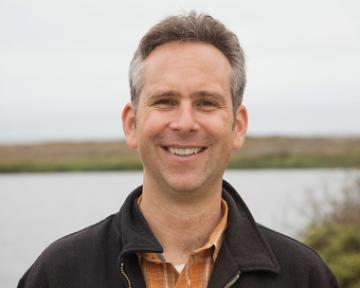
SCU Faculty-Student Team Tackles Climate Change Effects in Nicaragua
In the 1990s, the adage “it takes a village to raise a child” became a popular declaration that children need many people in their lives to successfully move to adulthood. In 2017, four Santa Clara University faculty researchers are taking a similar approach to addressing the complex issues associated with climate change in Central America.
Christopher Bacon (Environmental Studies & Sciences) has joined with Iris Stewart-Frey (Environmental Studies & Sciences), Bill Sundstrom (Economics) and Ed Mauer (Civil Engineering) on Bacon’s ongoing research that explores how a variety of environmental and economic issues are impacting coffee farmers in Nicaragua. A fifth researcher, Lisa Kelley, joined the team as a postdoctoral fellow. Two 2017 Santa Clara graduates, Claire Smoker (Environmental Studies) and Lindsay Tenes (Environmental Sciences) also are joining the researchers in Nicaragua this summer to assist with the work.
The extra hands are most welcome given the complexity and magnitude of the issues being researched. The team is exploring how coffee farmers in Nicaragua are grappling with several complex issues including food insecurity, regional water quality, an environmental blight called coffee leaf rust, a lengthy drought exacerbated by climate change and ongoing fluctuations in the coffee bean market.
Food insecurity, which describes the condition of people not having access to enough nutritious food on a consistent basis, is a global crisis that affects all countries. “There are about 800 million people around the world who suffer through food insecurity,’” notes Bacon. “They are malnourished. They don’t get enough quantity of food for their daily lives. Some of those people are in developing countries around the world, but there is also a growing number of people in wealthier countries. Another two billion people [on Earth], which is about one person in four, don’t get the different vitamins and different key nutrients that they need in their food.”
Food insecurity is just one of the many challenges the farmers face. Previous research by Bacon and others has confirmed that most of the water in large sections of Central America is contaminated with E. coli. Certain strains of the bacterium can cause intestinal disorders and food poisoning, which contribute to malnutrition issues in the region. A lengthy drought in Nicaragua, which virtually all climate scientists attribute to climate change, has further burdened Nicaragua's fragile water infrastructure. The farmers also are struggling with a broad outbreak of coffee leaf rust, a fungus that has caused more than one billion dollars in damage to coffee plantations since 2011. All of these factors have destabilized the already volatile market for coffee beans.
While Bacon has conducted a number of studies in Nicaragua over the past 17 years, the complexity of the problems that have emerged in his research have prompted him to build this team of researchers. Stewart-Frey’s expertise as a hydrologist allowed her to oversee the testing of the water the farmers access for their crops. She also brought the use of GIS (Geographic Information Systems) monitoring to the team, allowing it to visualize data on maps of the region to help identify and analyze environmental trends. Sundstrom brought his expertise in econometrics, providing greater sophistication to the team’s statistical analyses of its data. Mauer, who has designed and built community water systems, brought expertise in downscaling climate models. Mauer takes large computer models that, for example, predict a temperature rise in a large area of the Earth over the next few years and refines those models to project the impact on a much smaller area. Kelley joins the research team after recently completing her doctorate at University of California, Berkeley. According to Bacon, one reason Kelley was selected to join the team was her ability to communicate across disciplines. Bacon describes that skill as “the glue that holds us all together.”
Smoker served as a member of Bacon’s smaller research team in Nicaragua in 2016. Her responsibilities in the project include much of the GIS mapping used in that team’s recent research paper that is currently under peer review. Tenes and Smoker will be administering a lengthy survey to several hundred households who live in the research area in Nicaragua. Their skills to communicate in both Spanish and English will prove critical to their work.
Smoker and Tenes bring the number of SCU alumni involved in Bacon’s Nicaragua research to ten. Current SCU students have been involved in the research, as well. One student, Anand Purohit ‘18 (Political Science/Environmental Studies), is analyzing whether funds provided by the World Bank and other organizations to combat the coffee leaf rust outbreak are enhancing the resilience of the Nicaraguan citizens to future risks—or does this aid produce more vulnerability among the population?
The benefits for students involved in Bacon’s research efforts include the experience of working on complex research issues as part of a research team, and having the opportunity to co-author papers with their faculty mentors.
The faculty researchers departed for Nicaragua on June 12. Smoker and Tenes will join the team after commencement and be in Nicaragua from June 19 to July 2. Kelley will join the team in mid-July. Bacon says he hope the research helps the local citizens to develop strategies to minimize some of these problems they currently face. In addition, he notes that while the research focuses on the Nicaraguan farmers, the research questions, methods and analysis potentially impact people around the world.
Chris Bacon